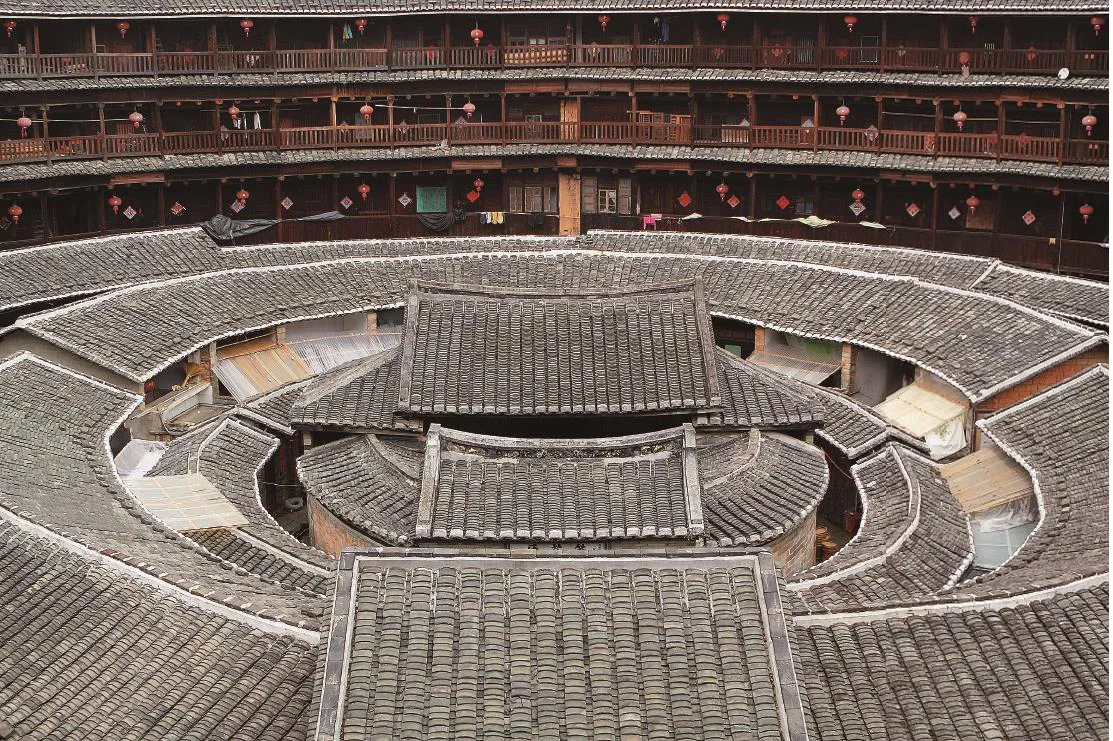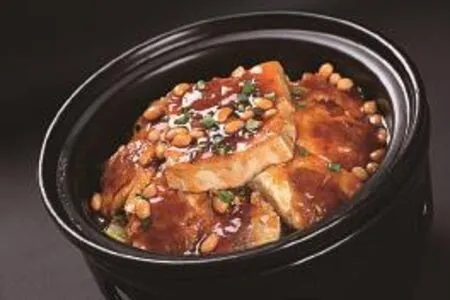Hakka Cuisine Fermented Richness
Text by Zhuzhu Photos by Gaopin & Nipic Translation by Sonia
Hakka Cuisine Fermented Richness
Text by Zhuzhu Photos by Gaopin & Nipic Translation by Sonia
Rich, strong flavour and mellow aromas are the major features of Hakka cuisine. Dishes, such as braised pork with preserved vegetables and stuffed tofu, are prepared with conventional ingredients, as they don’t prevail with high-valued scarcity but often present the richness of exotic delicacies.

The impact of languages on people is evidently profound and thorough. Take Guangdong for example. There are three dialects spoken: Cantonese, Chaoshan, and Hakka. The cultures obviously vary, as do their three distinctive cuisines.
Hakka dialect is the most diffi cult to understand among the three dialects, and Hakka cuisine is also considered the most intricate. Though not ranked in the eight major cuisines in China, it is divided into four groups: Meizhou, Dongjiang, Minxi, and Gannan. Among these four geographically categorised groups, Meizhou is the main battlefi eld of Hakka cuisine. Thus most people tend to associate Hakka cuisine with Meizhou.
Centuries ago, Hakka people moved south from the central plains of China and brought with them relatively complete languages and eating habits of the central plains to the new habitat, and they engraved this persistence of travelling across the nation into Hakka cuisine. Soups simmered in jars are among these well-known Hakka dishes, as
a proof of the wisdom gathered from the journey south.
The rich, strong fl avour and mellow aroma of Hakka cuisine benefi ts from unique ingredients, such as vinasse.
ln the Hakka community of Meizhou, the Hakka people live and breathe Hakka yellow rice wine. The lifestyle of making and drinking yellow rice wine has been maintained for over one thousand years. Therefore, integrating yellow rice wine into dishes couldn't be more natural to the Hakka people. ln fact, almost all dishes can be cooked with vinasse, and there aren't many contradictions to this claim.

Fried eggs - eggs are fried before being boiled in vinasse - is a highly nutritious dish for Hakka women after giving birth. The dish helps to replenish vital energy and has been passed down from generation to generation. Fried swamp eels: garlic, ginger, and vinasse are stir-fried till the aroma is released; swamp eels are then put into the wok; no water is added to the process, and only a spoonful of soy sauce is used for simmering after the ingredients are fried dry. The aroma is mouthwatering even from afar. Braised duck in vinasse is another strongly aromatic dish. The three spoons of vinasse are key in releasing the aroma through stirfrying - at this point, there is no foul smell at all in the duck meat, and the pleasant smell permeates to the bone.
Stuffi ng is also a notable cooking skill in Hakka cuisine, with the most obvious example being stuffed tofu.
lt is not hard to make tasty and soft tofu, but it can take patience and attention to detail. The small act of stuffi ng meat into diced tofu will take months of practice, and an amateur hand will easily destroy the tofu. After the meat is stuffed, the side with the fi lling is placed on the wok and fried till the colour turns brown; the fried tofu is then put in a casserole for stewing and cornstarch is added to thicken the soup before the heat is turned off. “Spending half a day bustling about a bowl of tofu with the delicious aroma permeating the whole neighbourhood,”says it best about this preserved Hakka dish often served for holiday celebrations.

